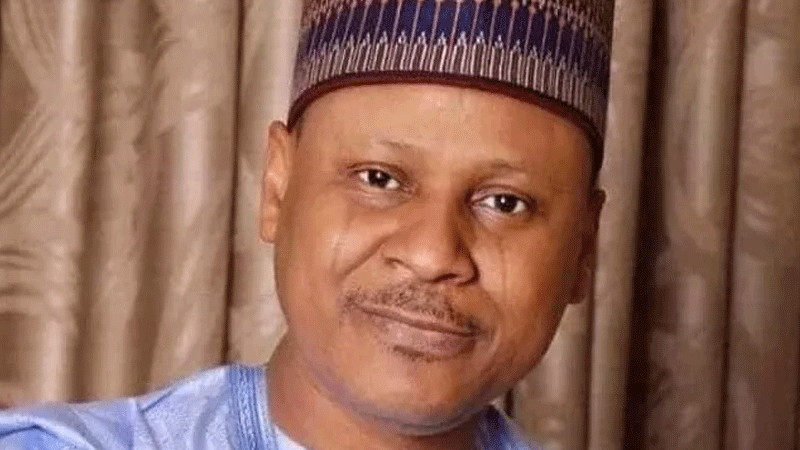Segun Ade-Martins
The Society of Nigerian Artists (SNA) and the Goethe-Institute have organised a one-day forum to discuss the repatriation of the Benin bronzes to Nigeria. The forum focuses on whether the efforts are a service to Nigeria and what the future holds.
The first in a series was held at Thought Pyramid Art Gallery in Abuja on May 27 with notable panellists from the German Embassy in Nigeria, the SNA president, Muhammad Sulaiman; Prof. Ben Okoli from Ahmadu Bello University, the director-general of the Nigerian Copyrights Commission, John O. Asein, and heir apparent to the Ozoro throne within the Benin Kingdom, Prince Akeni Prosper.
So far, the media narrative has focused on the details of repatriations to Nigeria. Now, German museums through the state have resolved to return all Benin artefacts in their possession to their origins.
The panellists’ selection aided in framing the arguments and crystallising stakeholders’ grasp of the stakes. And it appears that we have entered a new debate in this roundtable, one that includes the role of the birthplace of these long-disputed artefacts.
Germany has decided that the bronzes belong to the people of Nigeria and is working with the Nigerian authorities to repatriate them. Other museums globally are either in the process of doing so or have returned part or all of their treasures.
However, these custodians of the objects view them as aesthetic and archaeological anthropological objects that need to be in a museum’s collection. Along with this viewpoint is the possibility for Nigeria to develop a museum culture to capitalise on the economic value of these artefacts.
Museum culture involves the gathering and sorting of artefacts to tell stories about people and their cultures before our time. For the Europeans, this started in the 16th century as part of the “Renaissance,” the German Deputy Ambassador to Nigeria, Martin Huth, says, “and this renewed interest in the past that many of them actually started collecting and putting together collections of art. And this was a function of actually asserting power and privilege.”
Typically, museum artefacts don’t have descendants connected to their significance. Hence, it is mostly a voyeuristic gaze into the past to satiate curiosity and create a romantic vision of the past.
In between panel sessions, Addy Daniel Oyinkuro performed a folklore dance infused with contemporary techniques like krump, set to traditional Benin music. His presence was commanding as he embodied the Trials of Oba Ovonramwen in 1897, driving home the crimes of the colonialist past. However, is Nigeria free from colonialism’s oppression today?
The second panel session, with the rhetorical question, “A Part of History, or a Pathway to the Future?”, sets the discourse and debate of what to do with the returning artefacts. Currently, museums have agreed to repatriate the artefacts to Nigeria, with the National Commission for Museums and Monuments (NCMM) coordinating the efforts. However, former President Muhammadu Buhari has “vested custody and management in the Oba of Benin in a Government Notice No. 25 in Federal Republic of Nigeria Official Gazette No. 57, Volume 110, dated March 28, 2023.”
This presidential order creates uncertainty for some museums in the process of repatriation, while the Benin people are satisfied with the order. A new frontier of conflict may be on the horizon because of the two different intentions the stakeholders have with the returning artefacts.
The repatriation and restitution that may be required need to be different from where the discourse is at the moment. The museums are insistent on the gradual delivery of the bronzes. African art historians have criticised this approach and classified it as a bid to frustrate the eventual return.
They speculate on the reasons, but one cannot be entirely sure of their motives. The Oba and his subjects also align with this notion and express dissatisfaction with the pace of repatriation.
However, in all the viewpoints and motives of all stakeholders, one idea seems to be downplayed constantly. The story of the looting of the Oba of Benin’s palace in February 1897 by British Imperial forces was one of the truncations of the spiritual evolution of the Benin people.
Intellectually, museum archaeologists acknowledge the purpose of the Benin Bronzes created by their people, but they fail to acknowledge that the culture of the Benin is very much alive today. Traditions have been passed down for centuries in an unbroken chain through culture, sans the artefacts that were made for the Oba’s spiritual guidance. Essentially, the Benin kingdom has continued just like the present day European monarchies. They are not a dead culture like the Romans or other lost civilisations.
In their talks, Prosper and Asein, members of the Benin monarchy, recognised attendees as their kinsmen by sharing greetings in their native tongue using a call and response manner, which attests to their living culture. With clear perception, anyone can feel the deep pain of the loss and corruption of their cultural objects.
How, then, can it be that these spiritual objects are held to be viewed for curiosity and economic gain? Essentially, how can you perform archaeological anthropology on a living culture? Is it not akin to performing an autopsy on a living being?
• Ade-Martins writes from Abuja





